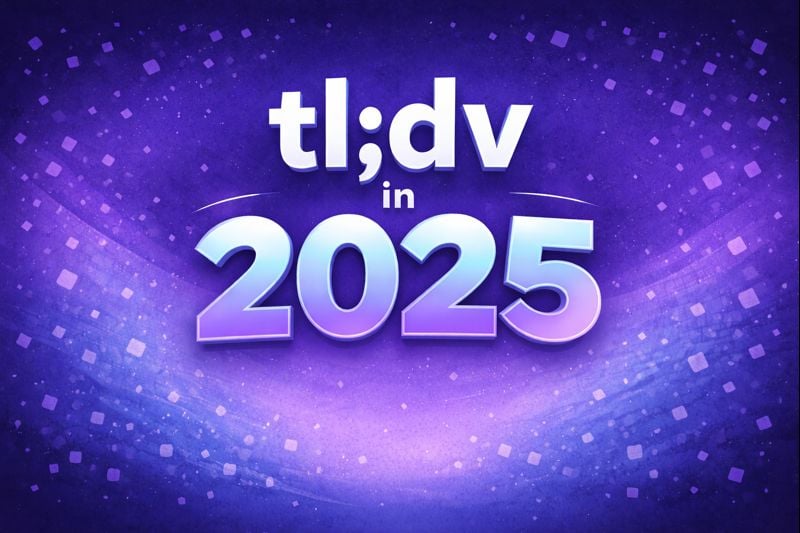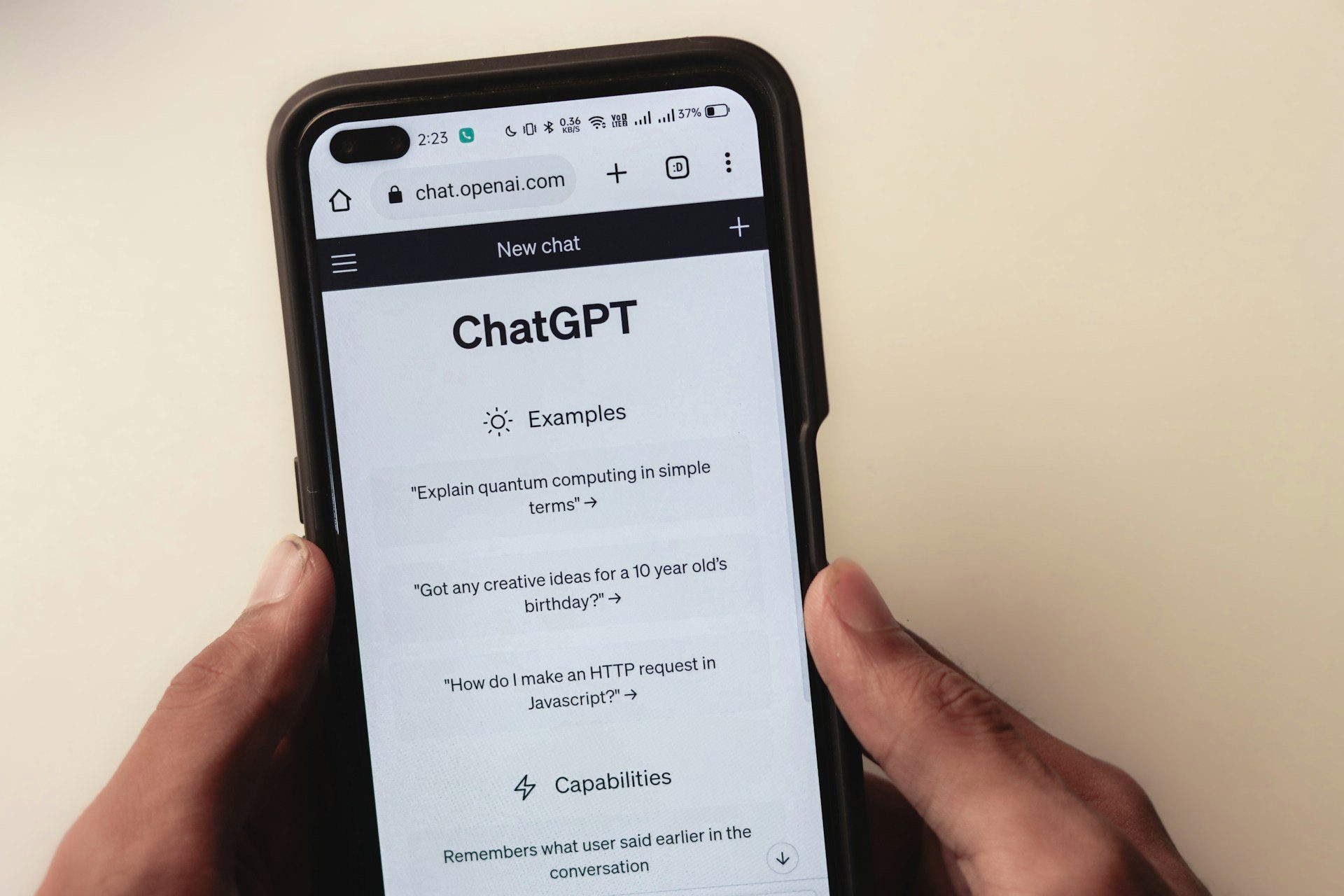Learning how to document UX research is a fundamental skill for every user researcher. It’s all well and good doing the research, but if your documentation is difficult to understand or access, your efforts will quickly spiral into chaos.
Where and how you store your user research largely depends on what kind of user research you have undertaken. While there are dozens of different types, from usability testing to behavioral heat mapping, we’re going to focus on the all-important user interviews.
There are plenty of documentation tools you can use to keep track of your research, but it’s not just about the software, unfortunately. Documentation tools aren’t magical genies that can solve all of your problems with a simple click of “install”.
No, a documentation tool or UX repository is just the start. There are several things you should keep in mind when you want to effectively document UX research. Ten things, to be precise.
@tldv.io Ian can make jokes about it. He was let go too. Goodluck to anyone dealing with this. It is frustrating, illogical, and difficult but you will get through it #layoff #tech ♬ original sound – tldv.io – AI Meeting Recorder
10 Ways to Effectively Document UX Research
1. Always Introduce the Key Components
Regardless of where you’re storing your research, you always need to make it abundantly clear to the reader what the purpose of your research is. Make sure the purpose, methods, findings, and outcomes are obviously visible and easily digestible. A non-researcher should be able to glimpse at your UX research repository and immediately understand those 4 elements.
Also contained and easily accessible in your research doc should be information about what was tested or researched, and who the user group was.
You can use a whole bunch of different UX research methods to complete your goals, but the final result should be crystal clear immediately.
2. Don’t Rely on Handwritten Notes
If you’re handwriting notes in the 2020s, you may as well be using a quill and ink. Of course, there’s nothing better than putting pen to paper when writing something creative, but for jotting down important bites of information on the fly, technology is your friend.
If you want to make the most of your user interviews, you should use tl;dv, a free tool that lets you make notes easily during an online meeting. You can set timestamps so that you and your team can revisit moments with precision and ease. It’ll create a hyperlink so you can jump straight to the moment the user said something noteworthy. And the best part? You can copy and paste it to your research repository in a couple of seconds, and your entire team can access it just as easily.
This makes your job a helluva lot easier. Think about when you’re presenting your research findings to stakeholders and product managers. You want to convince these people that your research is thorough and your suggestions are beneficial. What better way than by showing the stakeholders the problem in the voice of the customer themselves?
Nobody wants to read through dozens of handwritten notes. And even if you type them up neatly, you’re still missing the nuances and emotions that come through with real visual and audial comments. Not to mention, memory is a fickle b*tch.

3. Be Wary of Automatic Note-Taking
You know when we said you should avoid hand-writing notes? Well you should be careful around AI-generated notes too. Sure, AI can be helpful. I mean, there are dozens of AI meeting assistants that are super powerful and can help in many different ways, but when it comes to note-taking, you don’t want to rely on an algorithm.
With the rise of ChatGPT and Google’s rival chatbot, Bard, it’s no wonder that everyone wants AI to do everything for them. But there are certain things that you can do better than AI can, especially when it comes to understanding the nuances of human language. Most bots still fail captchas, but it takes a special breed of human to do so.

With tl;dv, you will soon be able to generate AI summaries of your meetings so that you can get an overview of what was said. However, the option to swiftly and manually add notes will always be there. This gives you the best of both worlds, empowering you to get state-of-the-art AI summaries, while also highlighting and timestamping all the parts that you deem noteworthy too. It’s the quickest and most efficient way to maximize your note-taking.
If you’re caught up in the AI hype, you might want to look at some free GPT meeting softwares. Just don’t rely on them to do everything as well as you can. AI isn’t that clever yet.
Or is it…?
4. Document User Insights as Accurately as Possible
The best way to document user insights is in their own voice. By using a meeting recorder, you can rewatch your user interviews as many times as you wish. This can help you plunge the depths of your user interviews, whilst also providing an excellent way to accurately and effectively document them.
It’s difficult to remember all the finer details of what your users say, especially if you’re trying to handwrite notes as you listen. tl;dv is a great example of a tool that lets you engage in the conversation more, knowing that you’ll have the recording to rewatch and analyze in more detail.
5. Don’t Forget the Question
Don’t just document the user’s answers. Also make sure you document the question. How was it phrased? Were you framing the question in a way to elicit a specific response? We do this all the time, intentionally or not. If you have a bias that you’re unaware of, it can completely disrupt the user research process.
A good way to ensure that bias is kept to a minimum is to run the Mom Test.
@tldv.io If my mom would like it, then it passes. Right? // @been.ian skipped one of our meetings to finish this #product #tech #momtest
♬ original sound - tldv.io - AI Meeting Recorder
The Mom Test is a simple test you can run to pluck good advice from anyone, including your mother! It helps you reframe questions to get to the heart of what the user wants, which, at the end of the day, is what user research is all about.
It should be a priority if you want to master customer-centric product development.
6. Make Use of a UX Repository
Briefly mentioned earlier, a UX research repository is a platform where you will collect, store, and maintain all your user research. From the very beginnings to the analysis and outcomes.
There are a wide range of UX research repository tools that you can use. Which tool you choose will depend on whether you want the repository to be easily accessible by your entire team, including the important decision makers, or if your research is so specific and niche that you will only have a small team of dedicated researchers using it.
We advise you to think about the sharing of your research findings, just as much as anything else, if not more so. Without being able to adequately portray your findings to those that make the final decisions, your research is effectively useless, no matter how beautiful it looks in your specialized repository.
Tools like Notion and Miro are often widely used by businesses. These low-hanging fruit can easily be converted into a research repository if you’re feeling creative. This saves money on expensive tools, makes it a lot easier for your entire team to access it, and provides a base for deeper analysis and research transparency amongst your team.
7. Ensure Insights are Accessible and Shareable
Reiterated for importance: if stakeholders and crucial decision makers can’t access or understand your research, it is useless.
Now, as this post is all about how to document UX research effectively, we have to make sure that it is easily accessible by the company stakeholders, and more shareable than a viral TikTok.
@tldv.io We love constructive criticsm #productmanager #product #tech #productmanagement #corporatehumor #startup
♬ original sound - tldv.io - AI Meeting Recorder
To do this, you might need to use a remote UX research tool like tl;dv to easily create clips, highlights and short snippets that you can copy and paste to your colleagues so they can get the raw and authentic version of the user’s wants and needs.
Available for both Google Meet and Zoom, tl;dv offers unlimited free recordings with live transcripts that can be edited to create shareable reels.
8. Track Patterns and Progressions
One of the most important things to do during the analysis phase is to keep track of patterns that crop up over and over and over again. When your users are all telling you the same thing, it’s time to start listening.
The best thing to do is develop a technique to keep track of things that users are repeating. One way is to use tl;dv’s powerful search function. By searching for a keyword, you can see in which meeting transcripts it has been used and what was said about it. In just a few moments, you can double check to make sure that you’ve covered all the times a specific topic was talked about.
There are plenty of ways you can measure the user experience, but keeping track of patterns and progressions is a surefire way to boost your efficiency.
9. Pay Attention to What Users Do, Not What They Say
User interviews are great, but they’re not the be all and end all. In fact, behavioral heat mapping tools like Hotjar provide fascinating insights into what your users are actually doing when they interact with your site or app. It shows what they’re drawn to, where they click, and, basically, what they do. With this information, you can spot weaknesses in your design and get access to the user’s actions rather than their opinions.
It’s worth noting that people are often unaware of what they like and dislike, or what appeals to them and what doesn’t. Sometimes it’s subtle. With heat mapping tools, you can get the answers from them via their actions rather than their words.
In addition to behavioral heat mapping, you can also use usability testing platforms like Maze. This allows you to create and test a prototype with ease. Different businesses will have different requirements: you can check out some other usability testing tools here.
When combined with the research gathered from user interviews, these other research methods provide a fantastic insight into what your customers actually want.
10. Tackle Your Biases
Mentioned earlier, all user researchers have biases. They’re inescapable. However, that doesn’t mean you can’t become aware of your biases and work to reduce them as much as possible.
It’s important to acknowledge any and all research biases in the documentation as early as possible. You can use this time to list any other shortcomings in the research too.
With your biases and other pitfalls laid bare before you, you can approach the research and analysis from a fresh mindset. It’s great to keep an eye on them throughout so that you can check you’re not slipping back into old habits. In a way, it’s like doing reality checks throughout the day so that you can eventually catch yourself in a dream and gain awareness. You want to catch yourself if you’re ever approaching things from a biased mindset.
Templates Galore!
If you were here because you were promised a free UX research document template, we haven’t forgotten about you!
There are tons of templates that you can use to help you document UX research. Here are a few free ones to get you started:
- Bit.ai’s Free Template
- Polaris’ UX Nuggets
- Zapier’s New Feature Research Base
- Lean Design Research for Emotional Data
If you’re looking for more free UX research documentation templates, you can get a big fat list of them here. 105 to be exact.
Document Your Research Effectively
We hope that our ten points and free template options helped you answer the question of how to document UX research in an effective way. Remember to start early; nobody wants to try and organize a manic mess after the research has already started coming in.
Put effort into the planning and structure of your research documentation and your future self will thank you. Also, don’t forget to utilize the power of video in bringing user voices closer to your organization.
A free user interview recorder like tl;dv helps you share and embed bite-size video insights so that your UX documentation is as accurate as possible.






